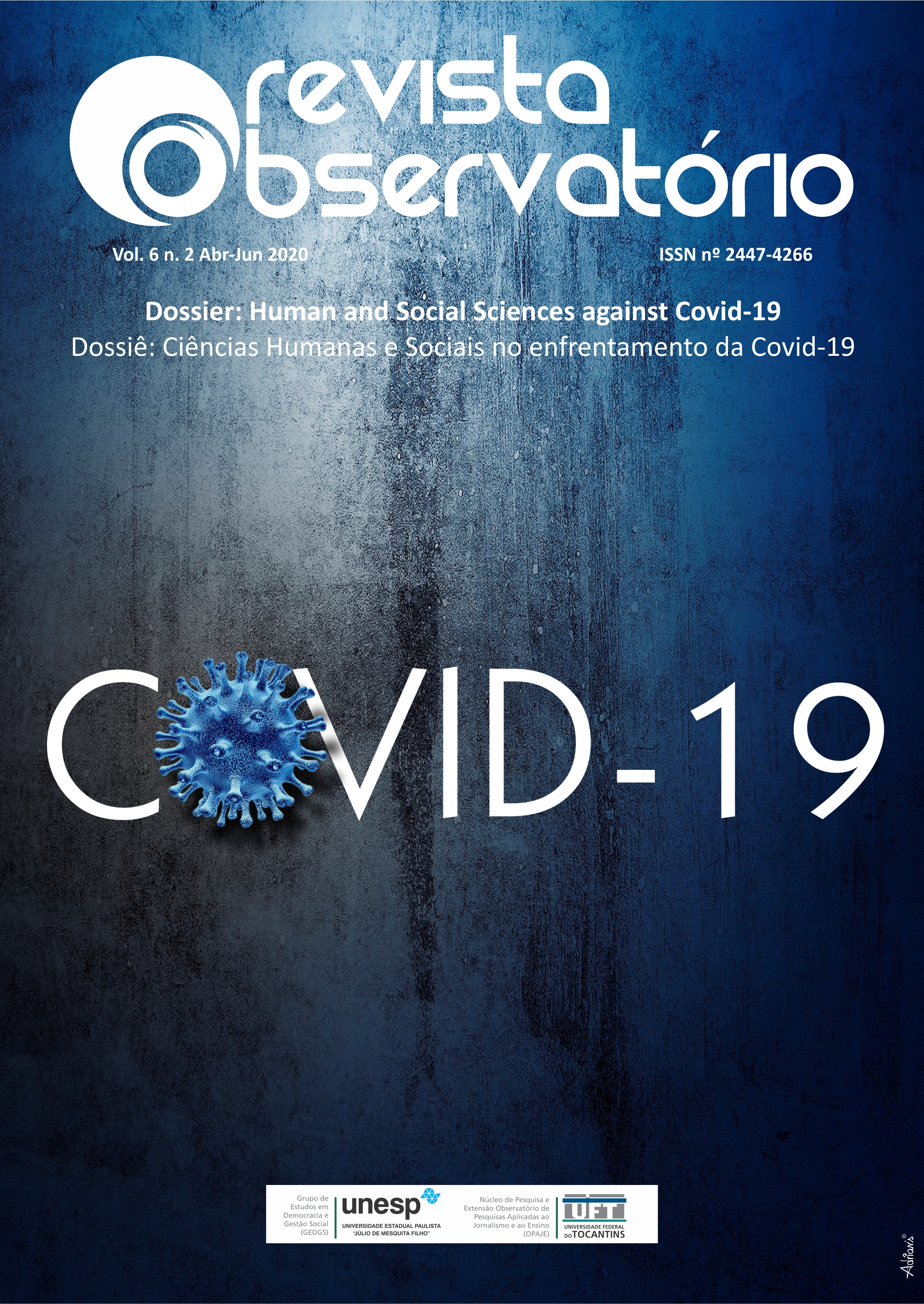DISINFORMATION TRANSGRESSION AND THE ANTI-VACINE GROUPS ON FACEBOOK
DOI:
https://doi.org/10.20873/uft.2447-4266.2020v6n2a13enKeywords:
Disinformation, Health communication, Anti-vaccination movement, Internet, Social mediaAbstract
The article proposal is to discuss the role of social media spreading fake news in the health context analysing misinformation content that circulate in one of the main anti-vaccine groups on Facebook. The proliferation of fake news is supported by a misinformation network whose nature exposes the fragility of the public health prevention system and the risk of the return of some diseases in Brazil. As a result of the misinformation, there is a decrease in vaccination coverage rates and there is an increased exposure of people to diseases.
Downloads
References
BARDIN, Laurence. Análise de conteúdo. São Paulo: Edições 70; 1977.
BRITES, Francielly; PORCELLO, Flávio. Verdade x mentira: a ameaça das fake news nas eleições de 2018 no Brasil. Anais do 41º Congresso Brasileiro de Ciências da Comunicação – Intercom; 2018; Joinville. São Paulo: Intercom; 2018. Available in: https://www.lume.ufrgs.br/bitstream/handle/10183/184434/001078994.pdf?sequence=1&isAllowed=y. Access at 03 jan. 2019.
D'ANCONA, Matthew. Pós-verdade: a nova guerra contra os fatos em tempos de fake news. Barueri: Faro Editorial; 2018.
FALLIS, Don. A conceptual Analysis of Disinformation. University of Arizona .[Internet]. 2009 Available in: https://www.ideals.illinois.edu/bitstream/handle/2142/15205/fallis_disinfo1.pdf?seq
HOOTSUIT, Wesocial. [Internet] Global Digital Report 2019. Disponível em: https://hootsuite.com/resources/digital-in-2019 Access at 11 nov.2019.
IBGE. Pesquisa Nacional em Amostragem Contínua (PNAD-C) 2017. Access at: https://www.ibge.gov.br/estatisticas/sociais/trabalho/17270-pnad-continua.html?edicao=23205&t=publicacoes. Acesso em 20 jun. 2019.
LEVI, Guido. Recusa de vacinas: causas e consequências. São Paulo: Segmento Farma; 2013.
MAINIERI, Tiago. Um peso duas medidas: desvelando a comunicação pública na sociedade midiatizada. Goiânia: Gráfica UFG; 2016.
McLUHAN, Marshall. Os Meios de comunicação como extensão do homem. Tradução de Décio Pignatari. São Paulo: Cultrix; 1964.
MINISTÉRIO DA SAÚDE. Secretaria de Vigilância em Saúde. Vigilância em saúde no Brasil 2003|2019: da criação da Secretaria de Vigilância em Saúde aos dias atuais. Bol Epidemiol [Internet]. 2019 set; 50 (n.esp.):1-154. Available in: http://www.saude.gov.br/boletins-epidemiologicos.
NYHAN, Brendan; REIFLER, Jason. When corrections fail: the persistence of political misperceptions - Duke University; Georgia State University; 2007. Available in: https://psycnet.apa.org/record/2010-08932-007
SUCCI, Regina. Recusa vacinal: o que é preciso saber. In: Jornal de Pediatria, Volume 94, Issue 6, November–December 2018.
WOLTON, Dominique. Internet, e depois? Uma teoria crítica das novas mídias. Porto Alegre: Sulina; 2011.
WORLD HEALTH ORGANIZATION. [Internet] World Health Statistics; 2018 [citado em 2019 nov. 11] Available in: https://www.who.int/gho/publications/world_health_statistics/2018/en/.
Published
How to Cite
Issue
Section
License
[PT] Autores que publicam nesta revista concordam com os seguintes termos:
1. Autores mantém os direitos autorais e concedem à revista, sem pagamento, o direito de primeira publicação, com o trabalho simultaneamente licenciado sob a Creative Commons Attribution License (CC BY-NC 4.0), permitindo o compartilhamento do trabalho com reconhecimento da autoria do trabalho e publicação inicial nesta revista.
Leia todos os termos dos direitos autorais aqui.

